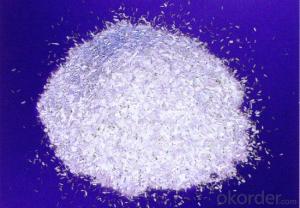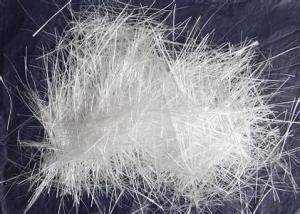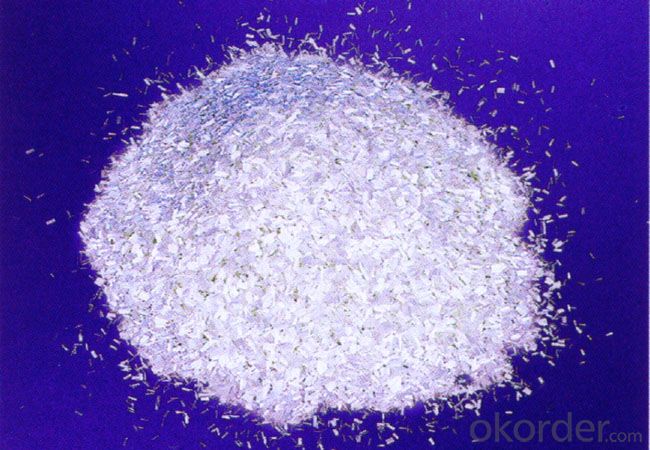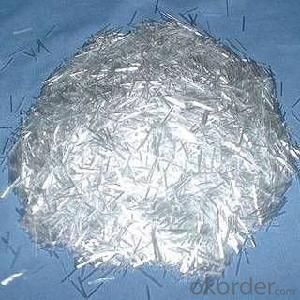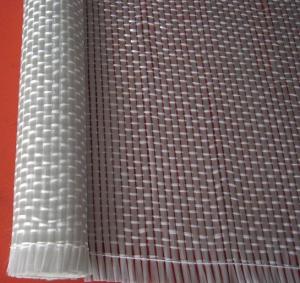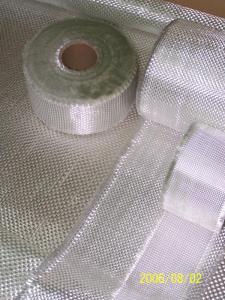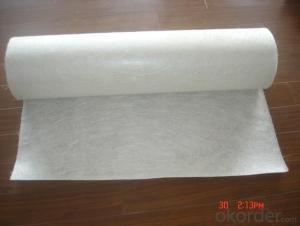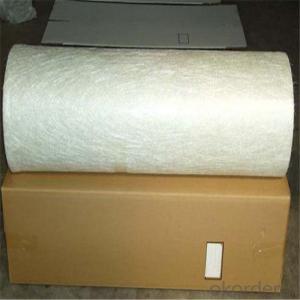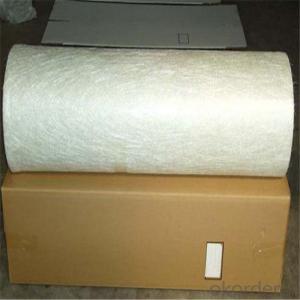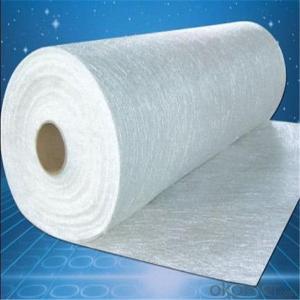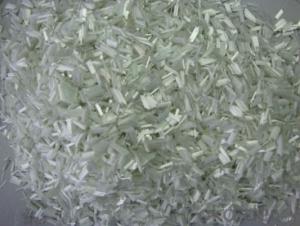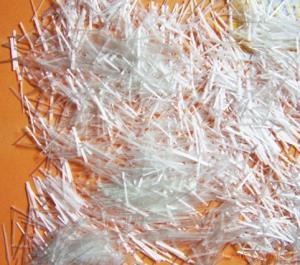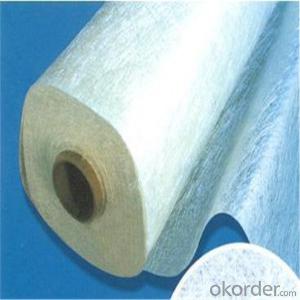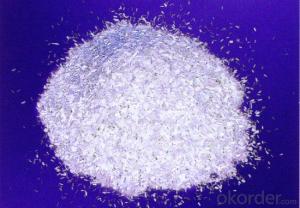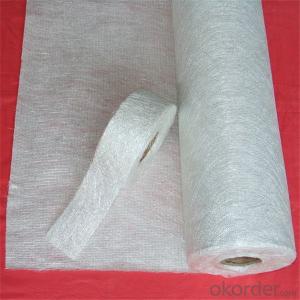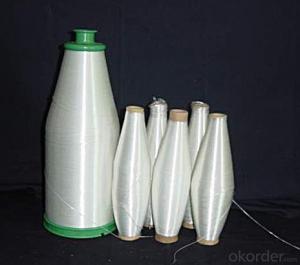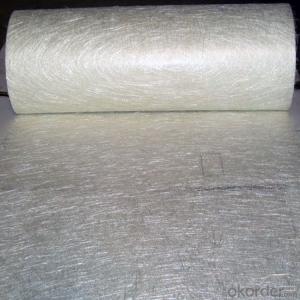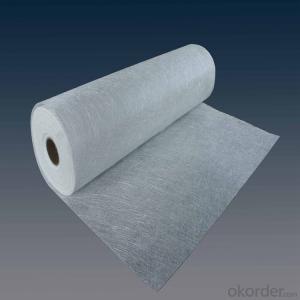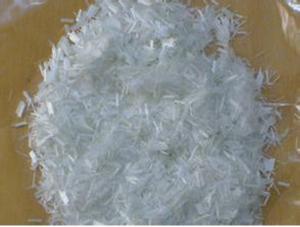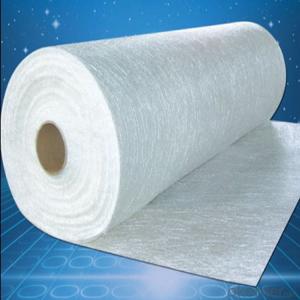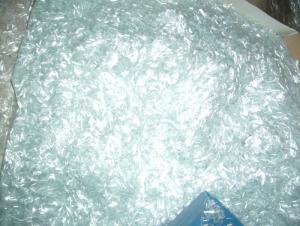1/4 Chopped Strand Fiberglass for Thermoplastics
- Loading Port:
- China Main Port
- Payment Terms:
- TT or LC
- Min Order Qty:
- 20000 kg
- Supply Capability:
- 200000Kg Per Month kg/month
OKorder Service Pledge
OKorder Financial Service
You Might Also Like
1.Brief Introduction
Chopped Stands for Thermoplastic are based on silane coupling agent and special sizing formulation, compatible with PA,PBT/PET, PP, AS/ABS, PC, PPS/PPO,POM, LCP;
E-Glass Chopped Stands for thermoplastic are know for excellent strand integrity, superior flowability and processing property, delivering excellent mechanical property and high surface quality to its finished product.
2.Product Features
Extremely low resin demand, delivering low viscosity to BMC paste
High impact strength; High LOI rate
High strand stiffness; Compatible with rubber
3.Product Specifications
Property | Fibre diameter | Moisture Content | Size Content | Chop |
(%) | (%) | (%) | (%) | |
Mathods | IS01888 | ISO3344 | ISO1887 | |
3mm | ±10 | ≤3.0 | 0.1±0.05 | 98 |
6mm | ||||
9mm | ||||
12mm |
Special specification can be produce according to customer requirements.
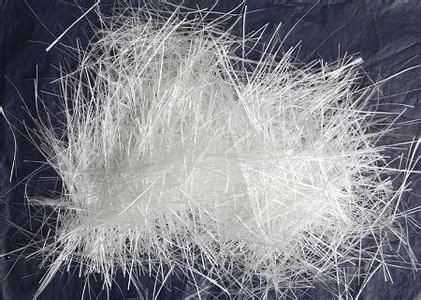
4.FAQ
Packaging:
Each bag can be taken (15-25kgs)。 Could also take a big container bag.
Storage:
Unless otherwise specified, It should be stored in a dry, cool and rain-proof area. It is recommended that the room temperature and humidity should be always maintained at 15℃~35℃ and 35%~65% respectively.
- Q: Is fiberglass chopped strand suitable for insulation materials?
- Yes, fiberglass chopped strand is suitable for insulation materials. It is commonly used in fiberglass insulation products due to its excellent thermal properties and ability to trap air pockets, providing effective insulation against heat and cold. Additionally, fiberglass chopped strand is lightweight, non-combustible, and resistant to moisture, making it an ideal choice for insulation applications.
- Q: Is fiberglass chopped strand suitable for marine structural applications?
- Yes, fiberglass chopped strand is suitable for marine structural applications. It is a durable and corrosion-resistant material that can withstand the harsh marine environment, making it ideal for use in boat hulls, decks, and other structural components. Its high strength-to-weight ratio and excellent impact resistance also make it a popular choice in the marine industry.
- Q: Can fiberglass chopped strand be used in filtration applications?
- Yes, fiberglass chopped strand can be used in filtration applications. It is commonly used as a filtration media due to its high strength, chemical resistance, and ability to capture and retain solid particles in various filtration processes.
- Q: Is fiberglass chopped strand suitable for the production of automotive components?
- Automotive components can be produced using fiberglass chopped strand, a reinforcement material commonly found in composite materials. This particular material possesses numerous advantages that render it appropriate for automotive applications. To begin with, fiberglass chopped strand exhibits exceptional strength and stiffness properties, both of which are crucial for withstanding a variety of loads and vibrations. It boasts a high tensile strength, which enhances the structural integrity of components, thus making it an ideal option for automotive manufacturers. Secondly, fiberglass chopped strand is lightweight, a highly desirable characteristic for automotive applications where reducing the overall weight of the vehicle takes precedence. The utilization of lightweight materials can contribute to improved fuel efficiency and vehicle performance. Furthermore, fiberglass chopped strand displays excellent resistance against corrosion, chemicals, and temperature fluctuations, making it suitable for automotive components exposed to harsh environments. Additionally, it offers commendable electrical insulation properties, a beneficial feature for components requiring electrical conductivity or insulation. What's more, fiberglass chopped strand proves to be cost-effective in comparison to materials such as carbon fiber, while still delivering satisfactory mechanical properties. This affordability makes it an appealing choice for automotive manufacturers seeking to strike a balance between performance and cost. In conclusion, fiberglass chopped strand stands as a fitting material for automotive component production due to its strength, lightweight nature, resistance to corrosion, and cost-effectiveness. These properties establish it as a reliable choice for various applications within the automotive industry.
- Q: Is fiberglass chopped strand easy to handle and process?
- Yes, fiberglass chopped strand is relatively easy to handle and process. It is lightweight and can be easily cut and shaped to fit various applications. Additionally, it can be mixed with resins or other materials to create composite products.
- Q: Can fiberglass chopped strand be used in the production of medical devices?
- Yes, fiberglass chopped strand can be used in the production of certain medical devices. It is commonly used as a reinforcement material in the manufacturing of medical equipment such as prosthetics, orthopedic devices, and dental applications. However, its suitability for specific medical devices should be assessed based on their intended use, safety requirements, and regulatory guidelines.
- Q: What are the quality control measures for fiberglass chopped strand production?
- Quality control measures for fiberglass chopped strand production involve several steps to ensure the production of high-quality products. These measures include: 1. Raw Material Inspection: Before production, the raw materials used for fiberglass chopped strand production, such as glass fibers and resins, are thoroughly inspected for their quality and conformity to specifications. This ensures that only the best materials are used in the manufacturing process. 2. Process Control: During the production process, various parameters are closely monitored and controlled to maintain consistency and quality. This includes controlling the temperature, pressure, and speed of the machinery used in the manufacturing process. Regular checks and adjustments are made to ensure that the production parameters are within the specified range. 3. Sampling and Testing: Regular sampling of the chopped strands is done at different stages of the production process. These samples are then subjected to various tests to assess their mechanical properties, such as tensile strength, flexibility, and dimensional stability. This helps in identifying any deviations from the desired quality standards and taking corrective actions. 4. Quality Checks: Finished products are thoroughly inspected for their appearance, dimensions, and other physical properties. This ensures that the chopped strands meet the required specifications and are free from any defects or impurities. Visual inspections, as well as specialized testing equipment, may be used to verify the quality of the products. 5. Documentation and Traceability: Each batch of fiberglass chopped strands is assigned a unique identification number, which allows for traceability and tracking of the product throughout the manufacturing process. This helps in identifying any issues or discrepancies and enables prompt corrective actions. 6. Continuous Improvement: Quality control measures are not limited to the production process alone. Feedback from customers, as well as internal audits and inspections, are used to identify areas for improvement. This helps in implementing corrective and preventive actions to enhance the overall quality control system. By implementing these quality control measures, manufacturers can produce fiberglass chopped strands that meet or exceed the required standards and customer expectations. This ensures the reliability, durability, and performance of the final products, making them suitable for various applications in industries such as automotive, construction, and aerospace.
- Q: How does the fiber alignment of fiberglass chopped strand affect its flowability?
- The flowability of fiberglass chopped strand is significantly affected by the alignment of its fibers. Flowability refers to the ease with which a material can flow and fill a desired shape or mold. In the case of fiberglass chopped strand, the fibers' alignment can either improve or impede its flowability. When the fibers in chopped strand are aligned in a parallel or uniform manner, it allows for smoother and more even material flow. This is because the aligned fibers create a well-organized and structured network, facilitating the movement of the resin or matrix material between and around the fibers. As a result, the chopped strand can flow more easily, ensuring the material is distributed and consolidated better during the molding process. Conversely, if the fibers in chopped strand are randomly oriented or inconsistently aligned, it can hinder the material's flowability. Randomly oriented fibers create a chaotic network, making it challenging for the resin to flow uniformly and fill the mold or shape. This can result in voids, uneven material distribution, and reduced strength and performance of the final product. In conclusion, the fiber alignment of fiberglass chopped strand plays a vital role in determining the material's flowability. A well-aligned fiber structure improves flowability, ensuring better material distribution and consolidation. Conversely, a random or inconsistent fiber alignment can impede flowability, resulting in defects and reduced product quality.
- Q: How does fiberglass chopped strand compare to other reinforcing fibers?
- Fiberglass chopped strand is a widely used reinforcing fiber that offers several advantages compared to other fibers. Firstly, it has excellent strength and durability properties, making it suitable for a wide range of applications. Additionally, fiberglass chopped strand is cost-effective and readily available, making it a popular choice in industries such as automotive, construction, and aerospace. It also has good chemical resistance and electrical insulation capabilities. However, it is important to note that the choice of reinforcing fiber ultimately depends on the specific requirements of the application.
- Q: How is the fire resistance of fiberglass chopped strand determined?
- The fire resistance of fiberglass chopped strand is determined through a series of standardized tests and evaluations. The most common method used is the ASTM E84 test, also known as the Steiner Tunnel test. This test measures the surface burning characteristics of materials by evaluating their flame spread and smoke development. During the test, a fiberglass chopped strand sample is exposed to a controlled flame and the flame spread rate is measured. The test also assesses the amount of smoke generated during the burning process. Based on the results, the material is assigned a Class rating, ranging from Class A (the highest fire resistance) to Class C (the lowest fire resistance). In addition to the ASTM E84 test, other tests such as the UL 94 test can be used to determine the fire resistance of fiberglass chopped strand. This test evaluates the material's ability to self-extinguish after being exposed to a small flame. The test results in a V rating, with V-0 indicating the highest fire resistance and V-2 indicating the lowest fire resistance. These standardized tests provide a reliable and consistent way to determine the fire resistance of fiberglass chopped strand, ensuring that it meets the required safety standards for various applications.
Send your message to us
1/4 Chopped Strand Fiberglass for Thermoplastics
- Loading Port:
- China Main Port
- Payment Terms:
- TT or LC
- Min Order Qty:
- 20000 kg
- Supply Capability:
- 200000Kg Per Month kg/month
OKorder Service Pledge
OKorder Financial Service
Similar products
Hot products
Hot Searches
Related keywords
